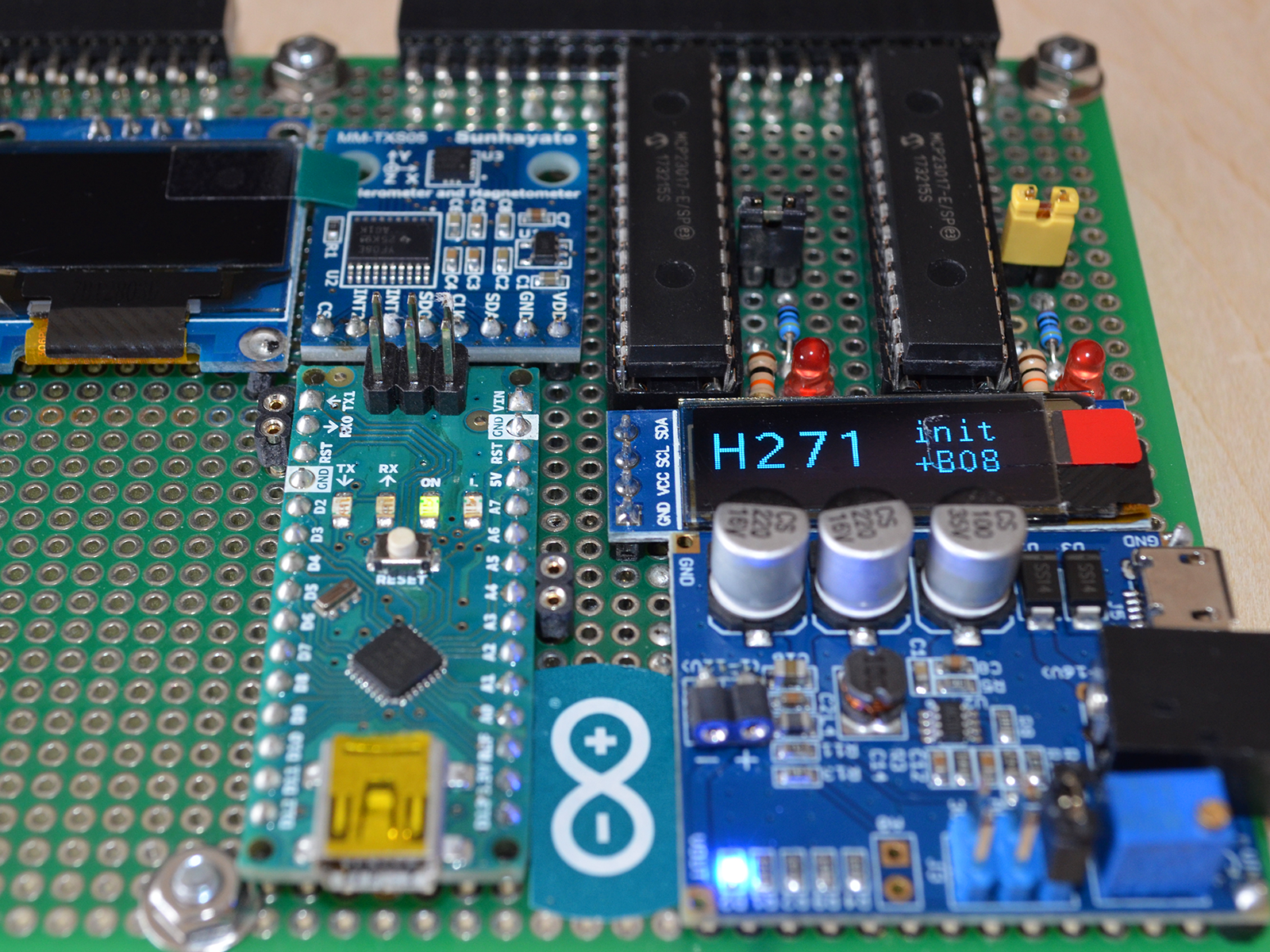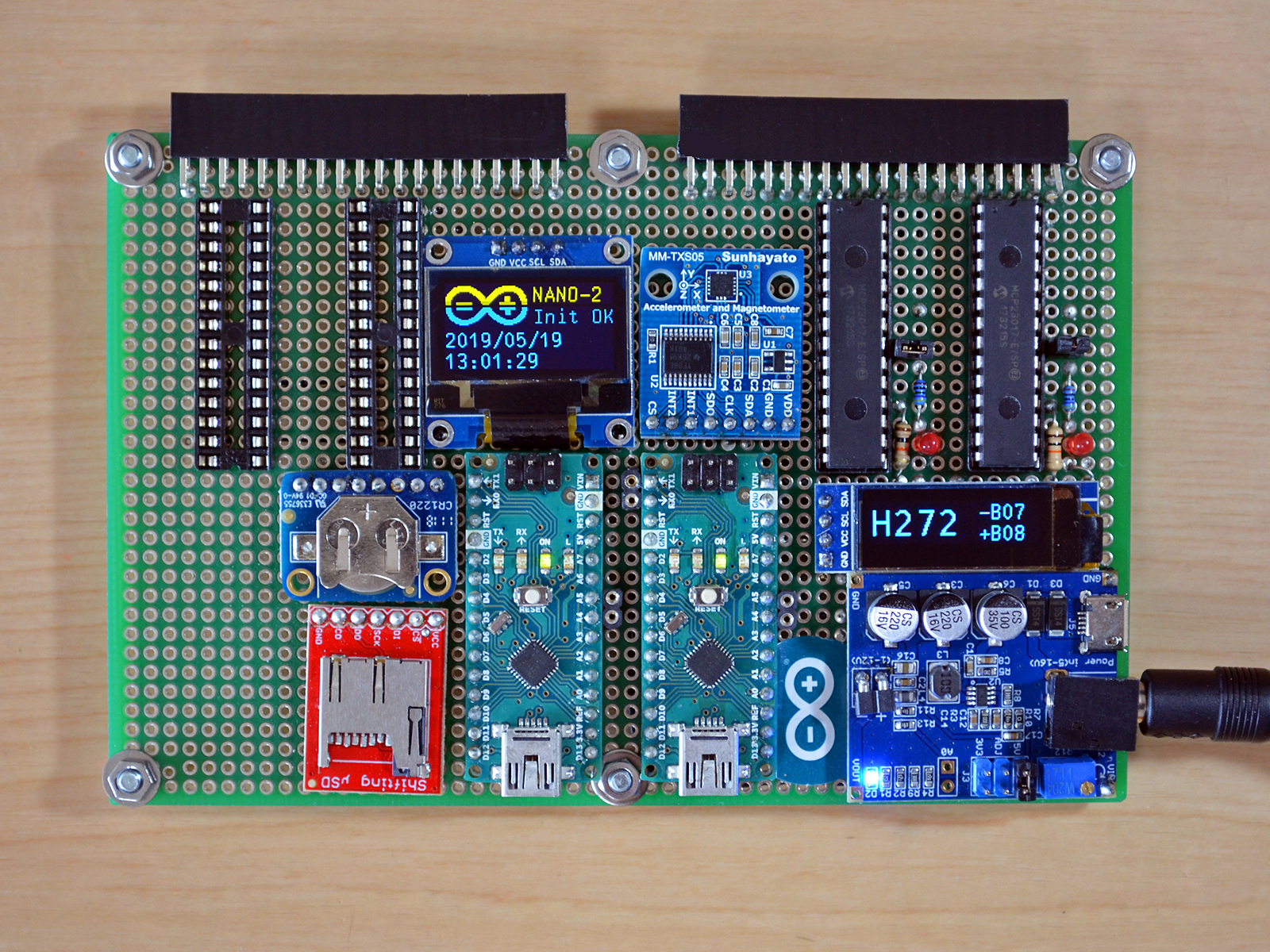With the compass functionality tested on a breadboard, the next step is to transfer it to a universal prototyping board, adding a status display and IO expansion ports to drive a LED ring that simulates the horizon. For the board, I am going to use the Takachi TNF 89-136.

I had an Ardunio Nano at hand to be used as the micro controller, which will later turn out to be vastly inadequate to drive all the peripherals. At this stage, The Nano was holding up OK: driving the LSM303 magnetometer sensor, the 128x32 OLED display, and two MCP23017 IO expanders from Microchip, all over the I2C bus. In front is the stepdown voltage regulator from Seeed Studio.
 |  |
In the left half of the universal prototyping board, I placed the remaining components: the DS3231 RTC clock, the MicroSD card reader, and a bigger 128x64 OLED display. For data exchange, was going to connect the two Nano over the serial line interface. But before that, I run into severe RAM space issues. The MicroSD card driver requires >512 Bytes buffer space, the bigger 128x64 OLED reserves a larger frame buffer, exhausting the 2K RAM space of the Nano without having written any code yet.

A second challenge was my patience and steady hand. To route and wire 96+ connections required for the LED ring manually, it was going too slow and error-prone. I decided to better get a bigger CPU, and I'd better create a PCB.
 Frank
Frank
Discussions
Become a Hackaday.io Member
Create an account to leave a comment. Already have an account? Log In.